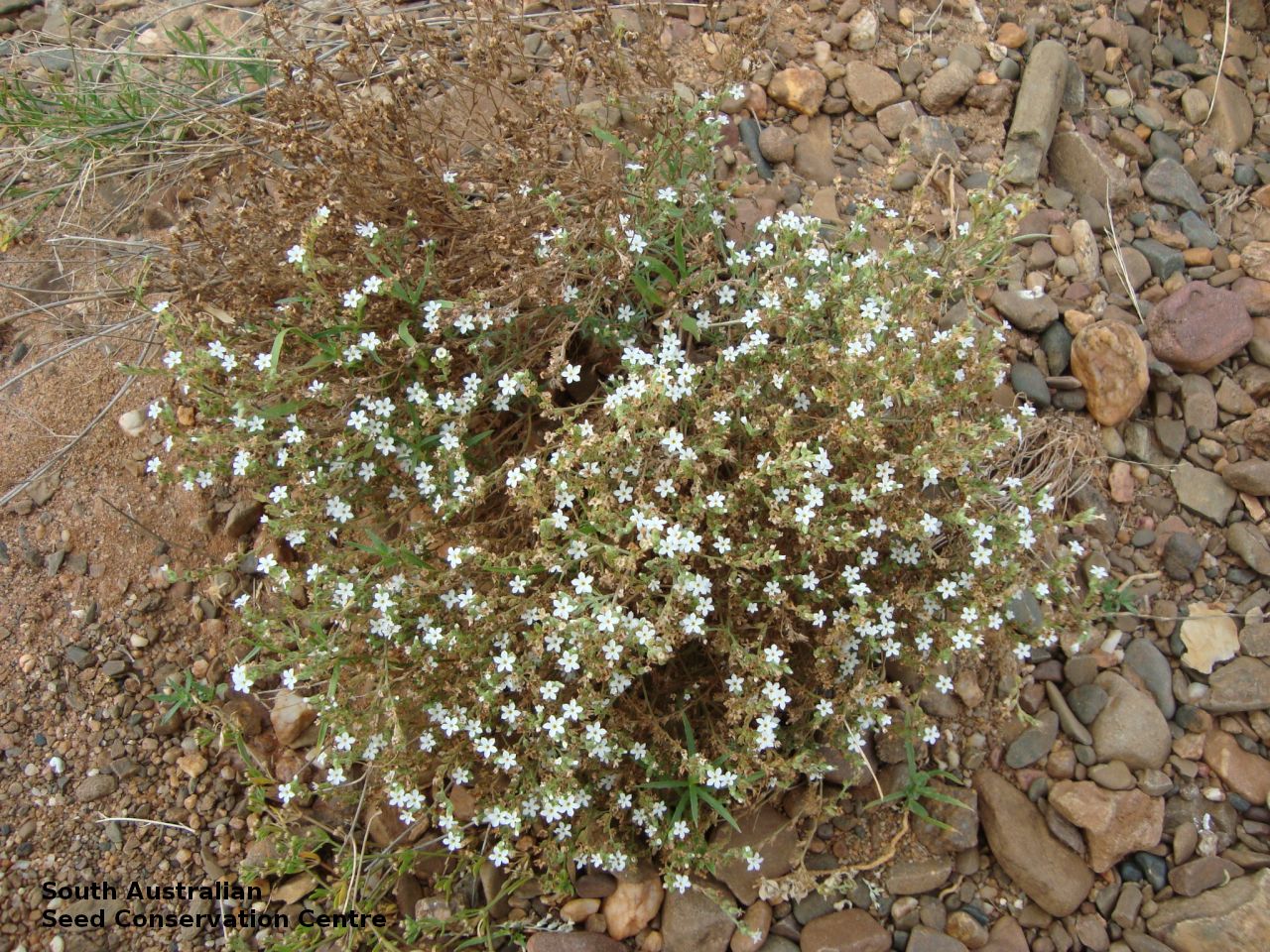
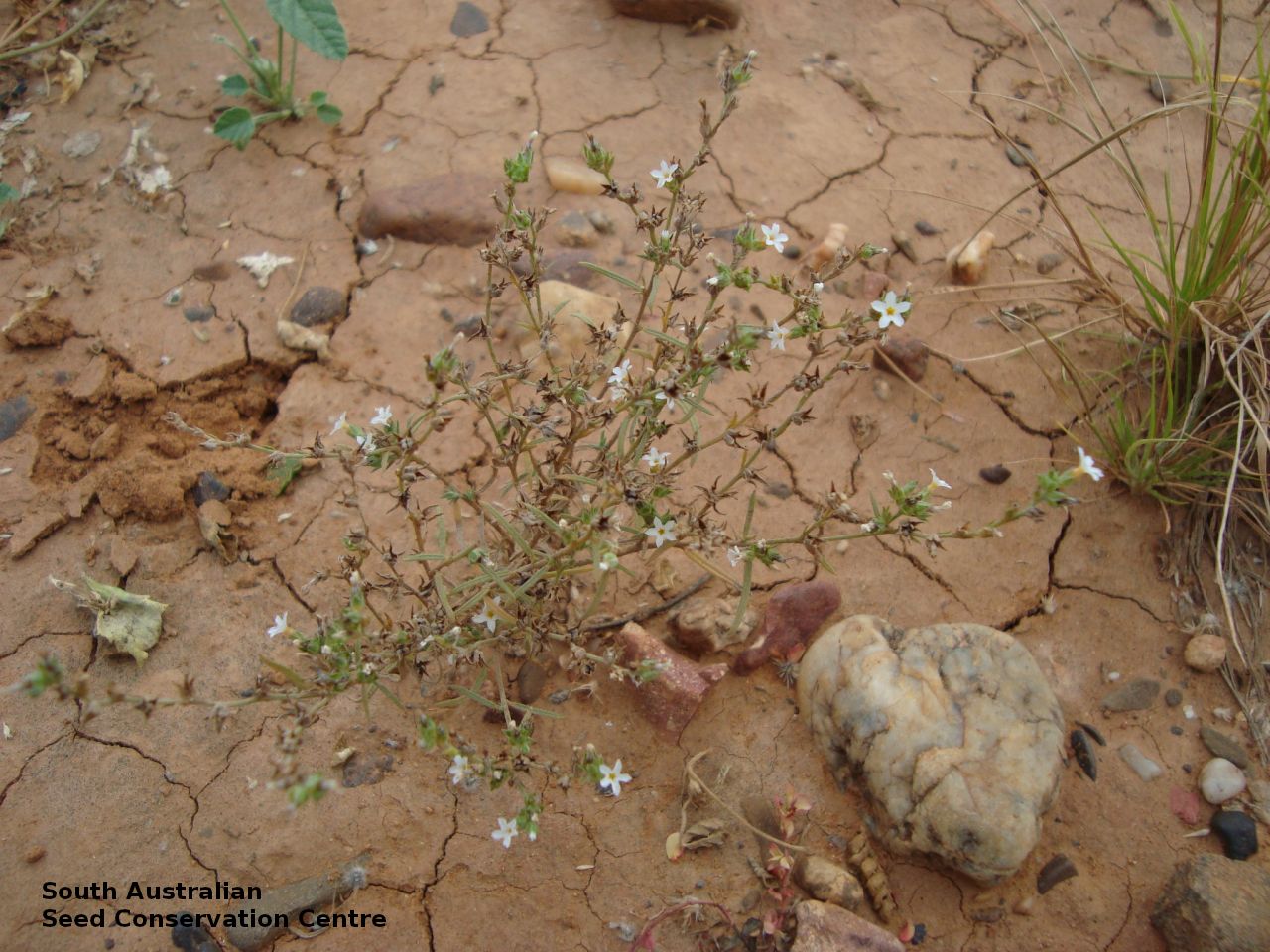
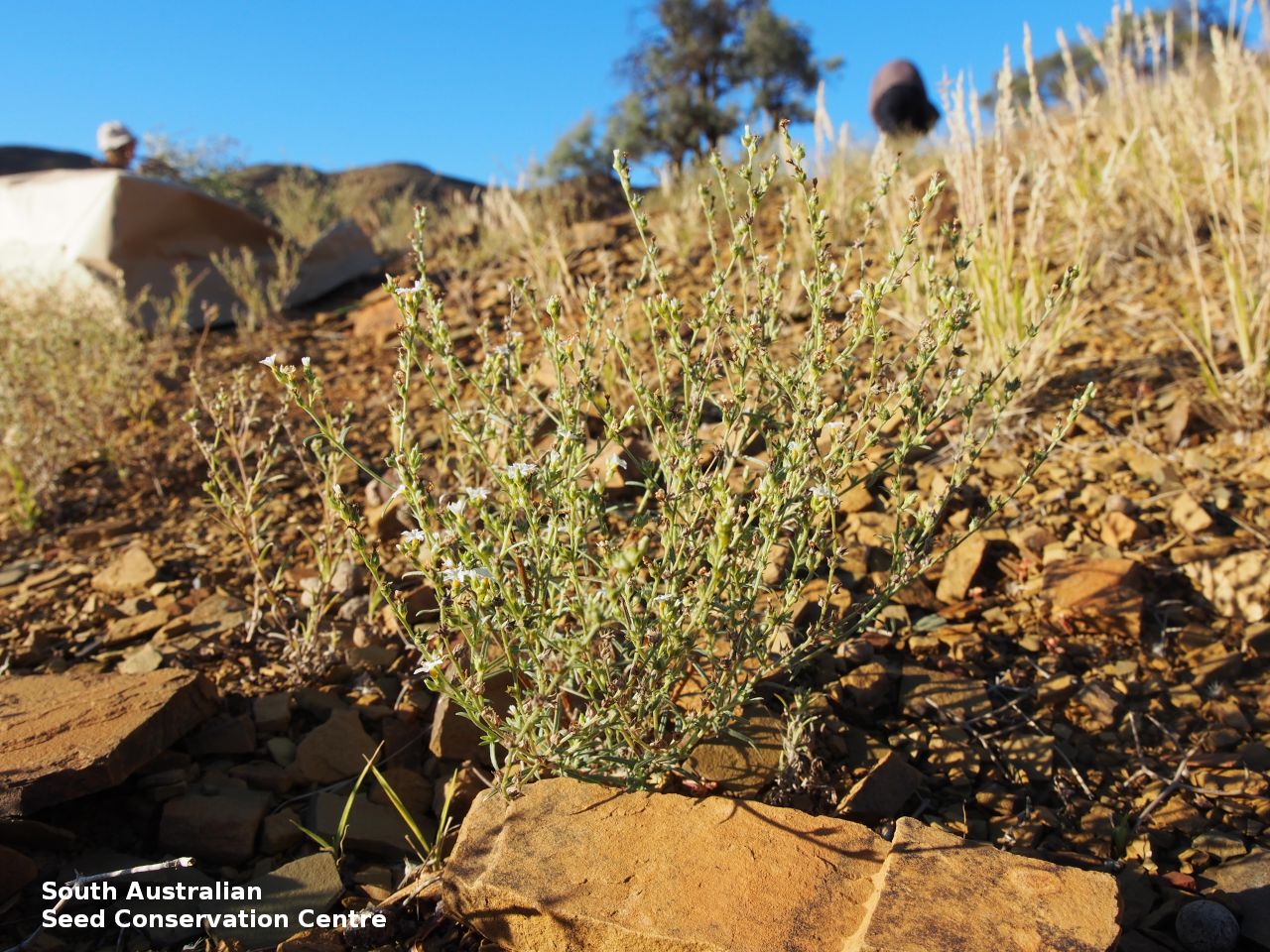
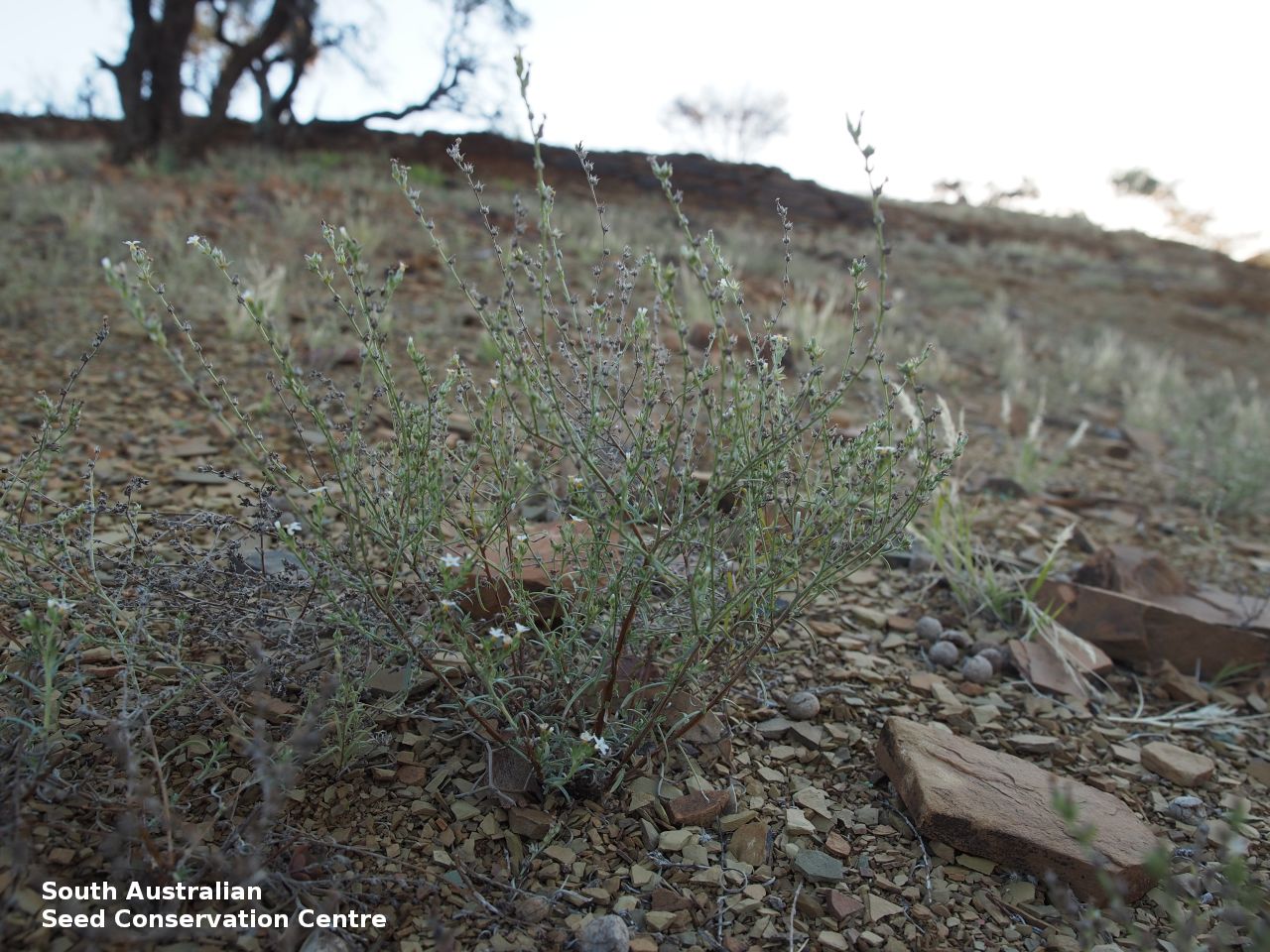
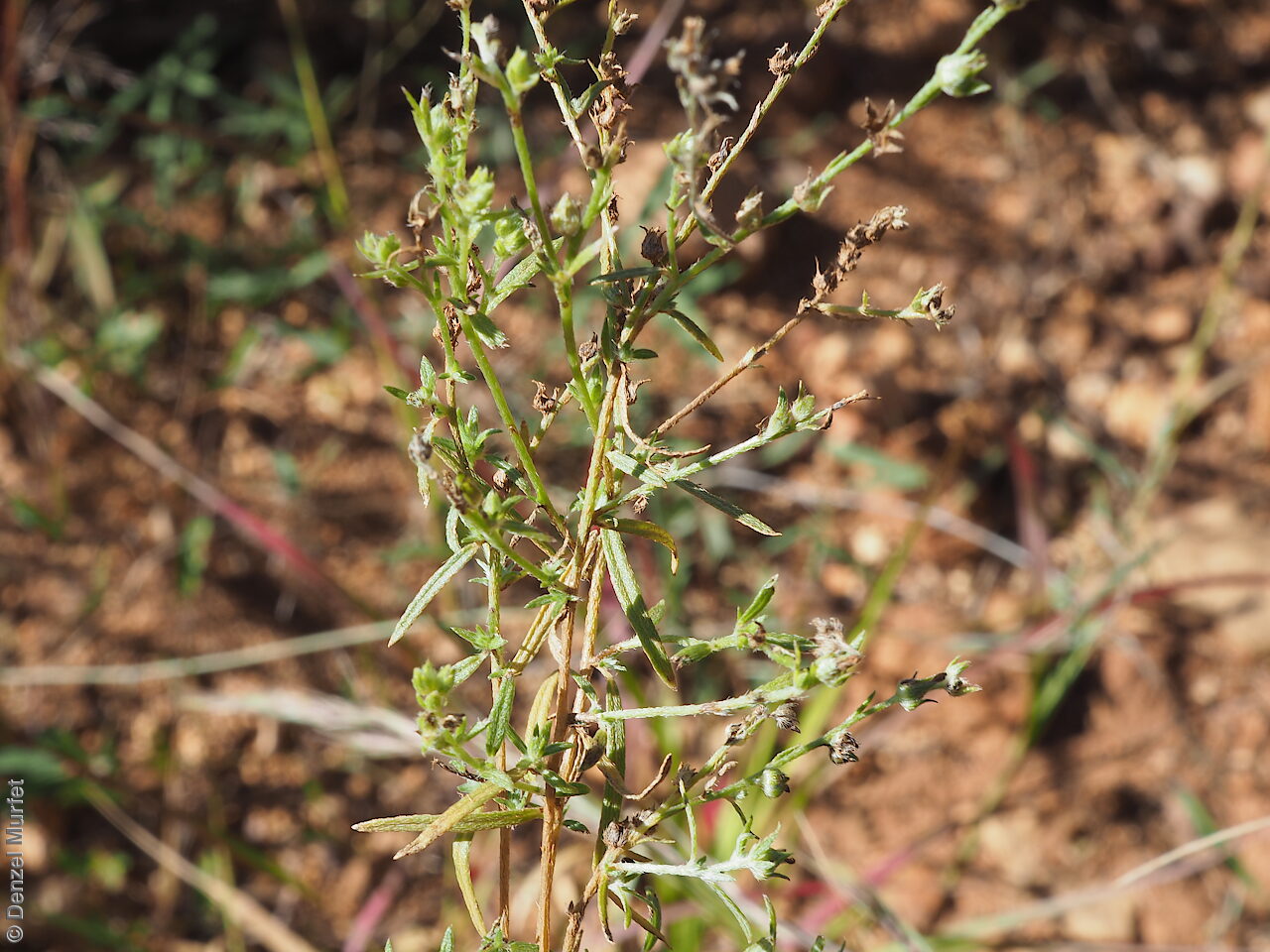
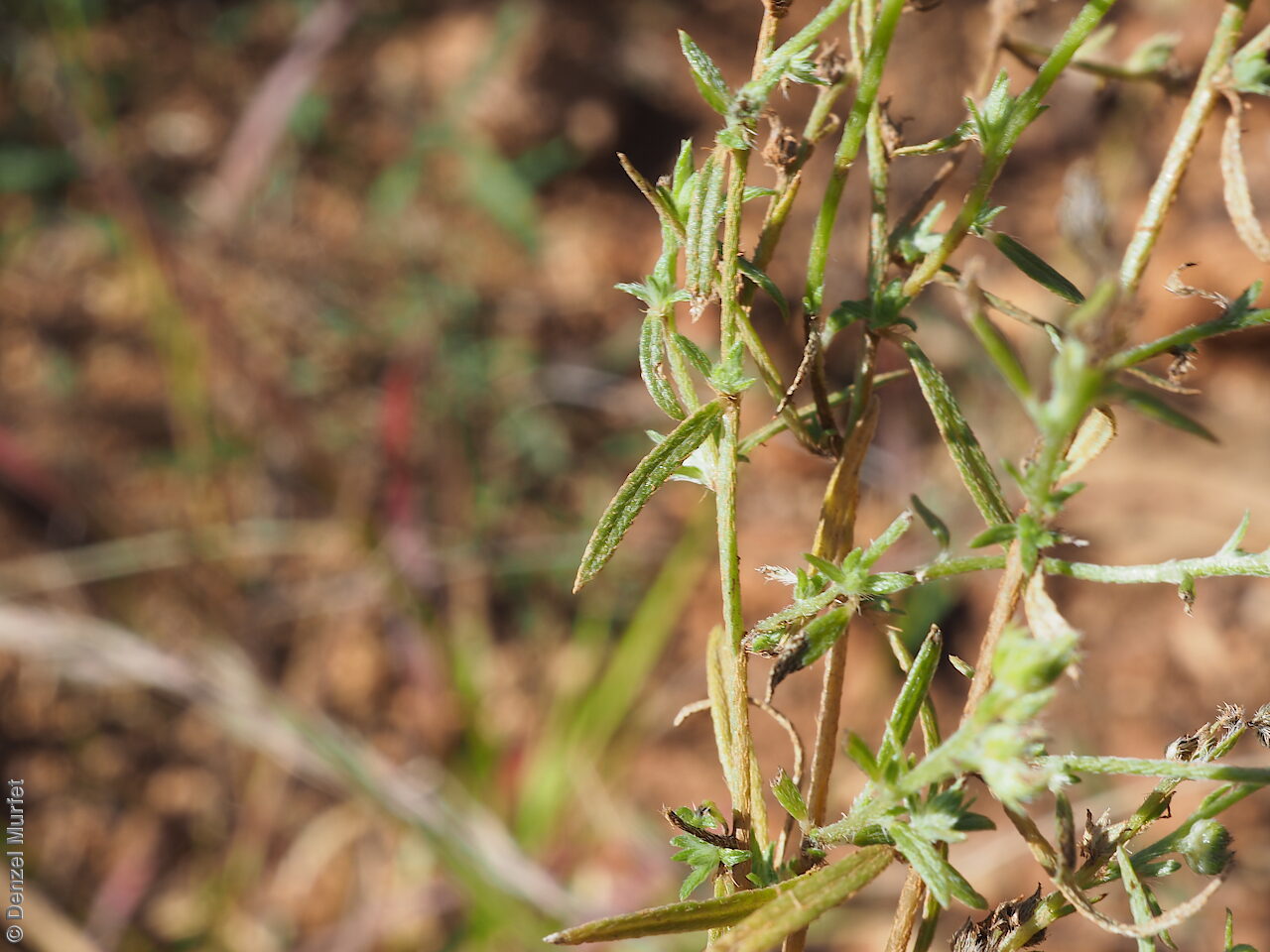
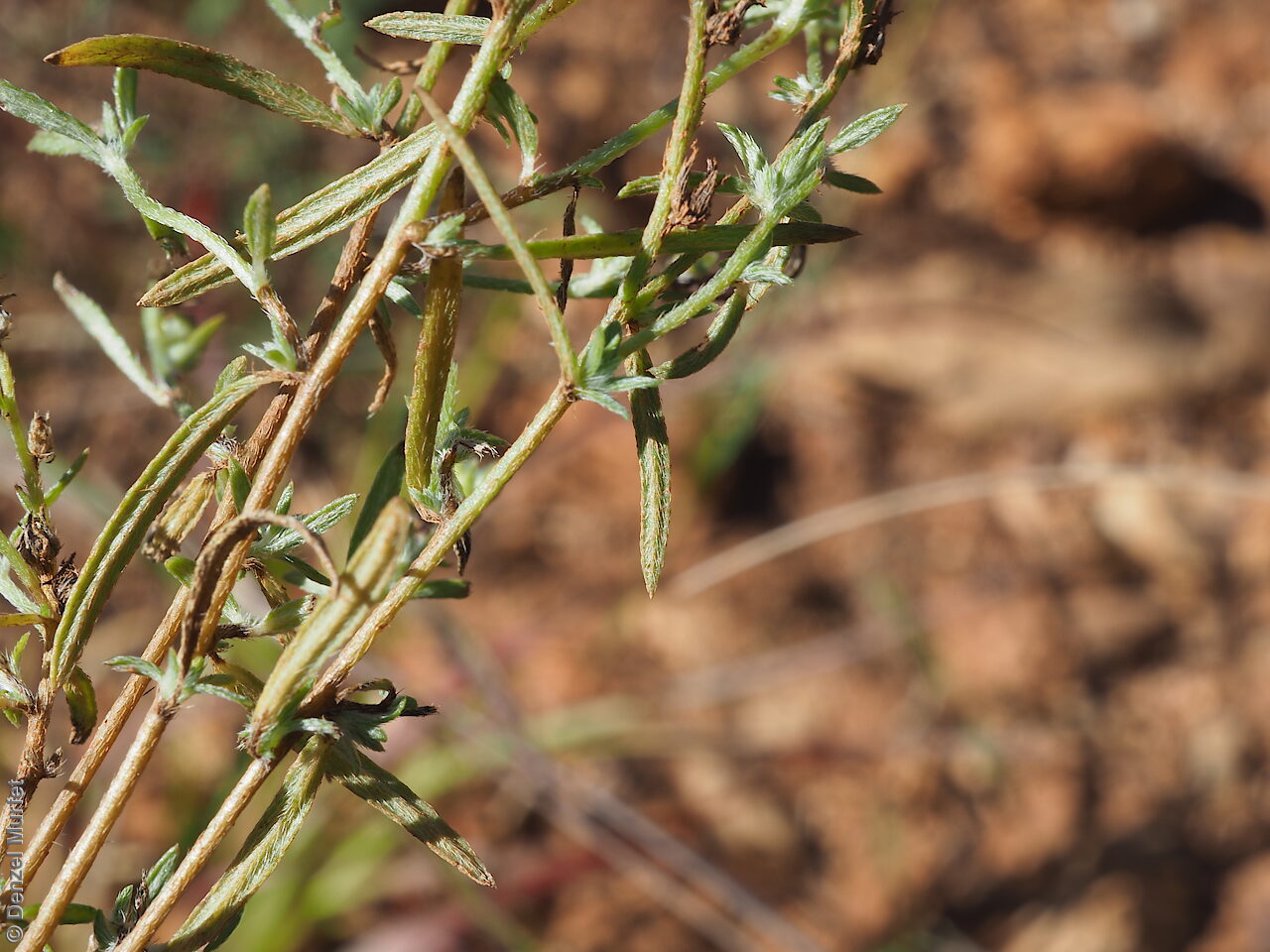
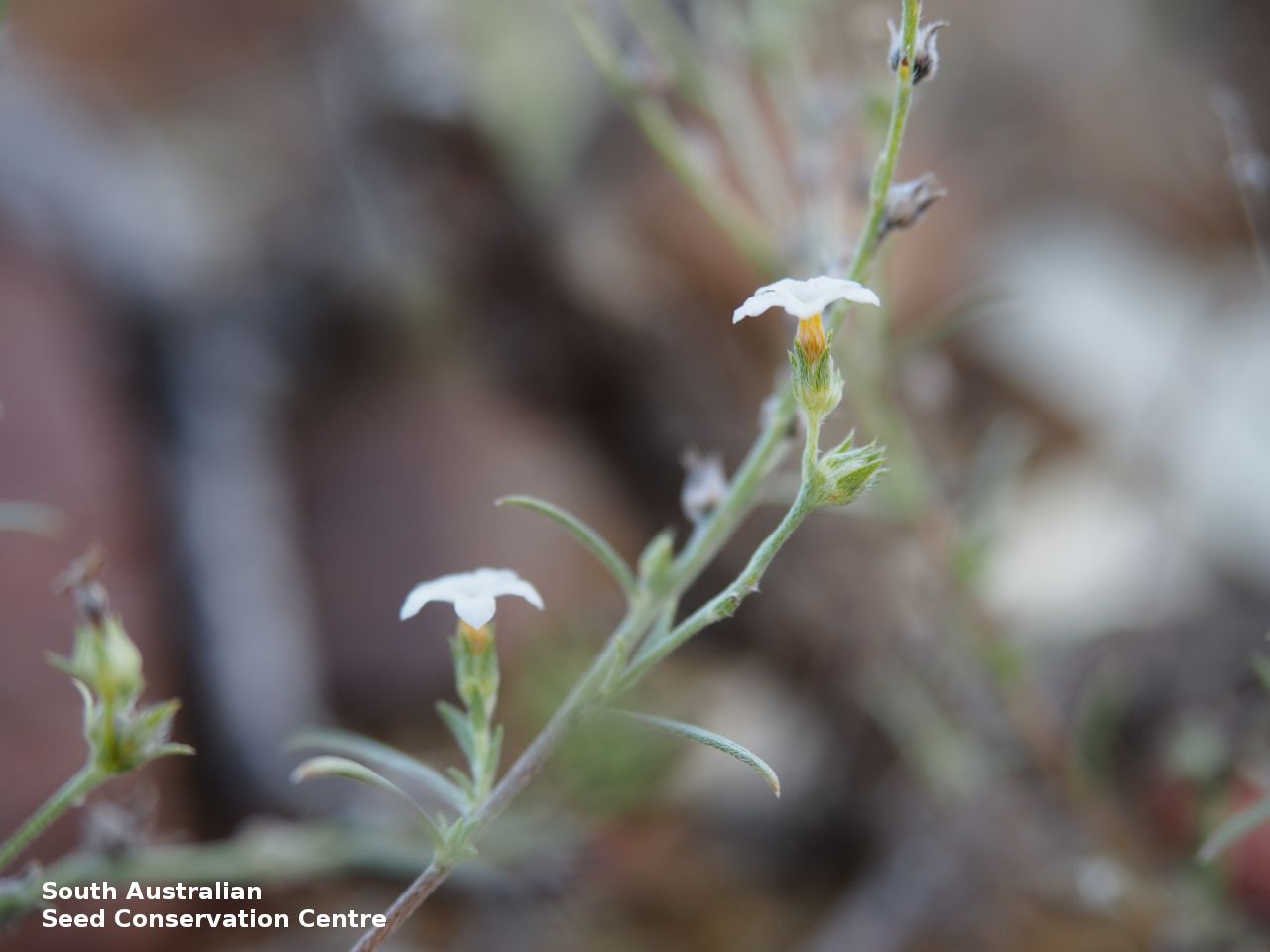
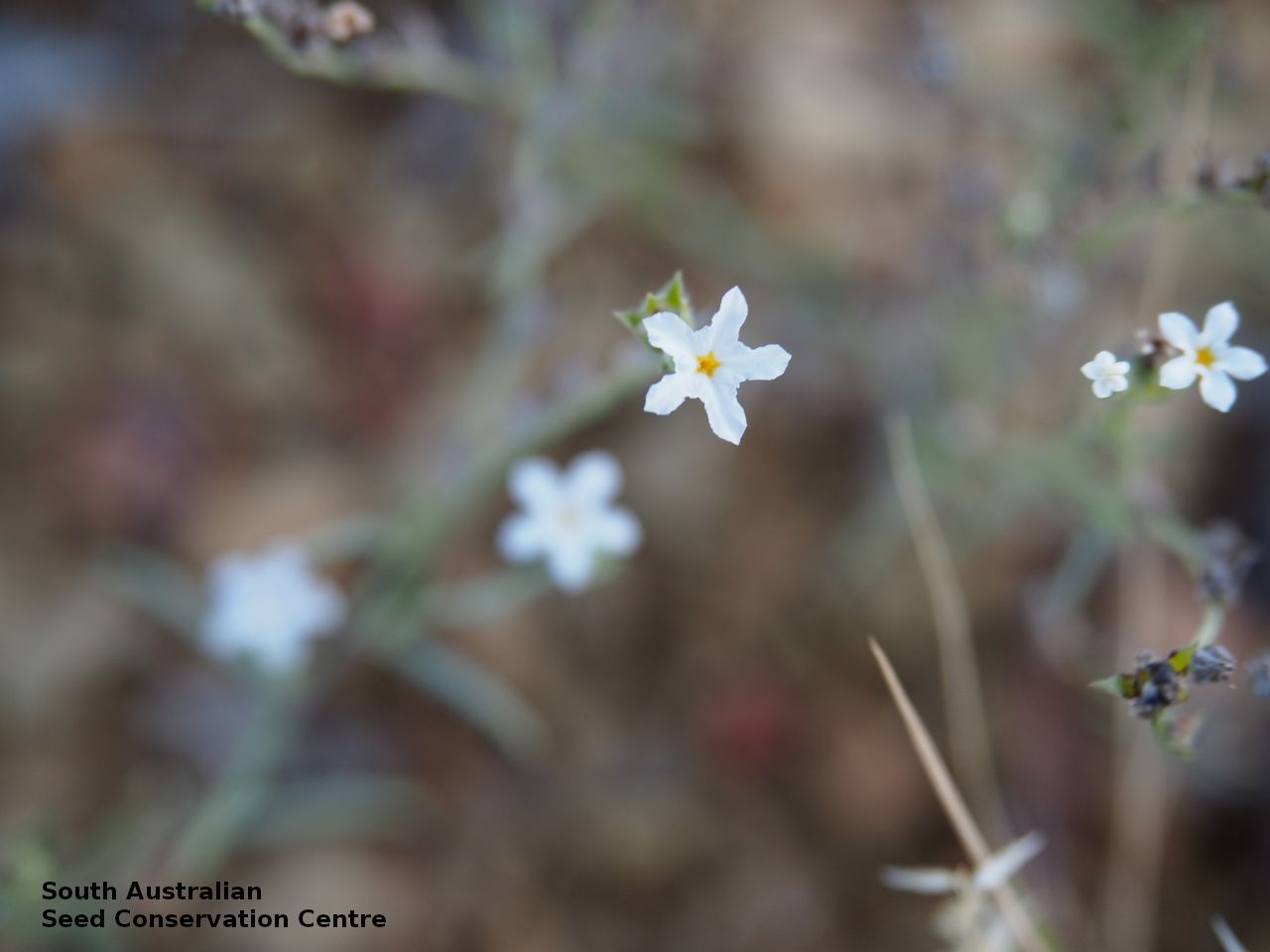
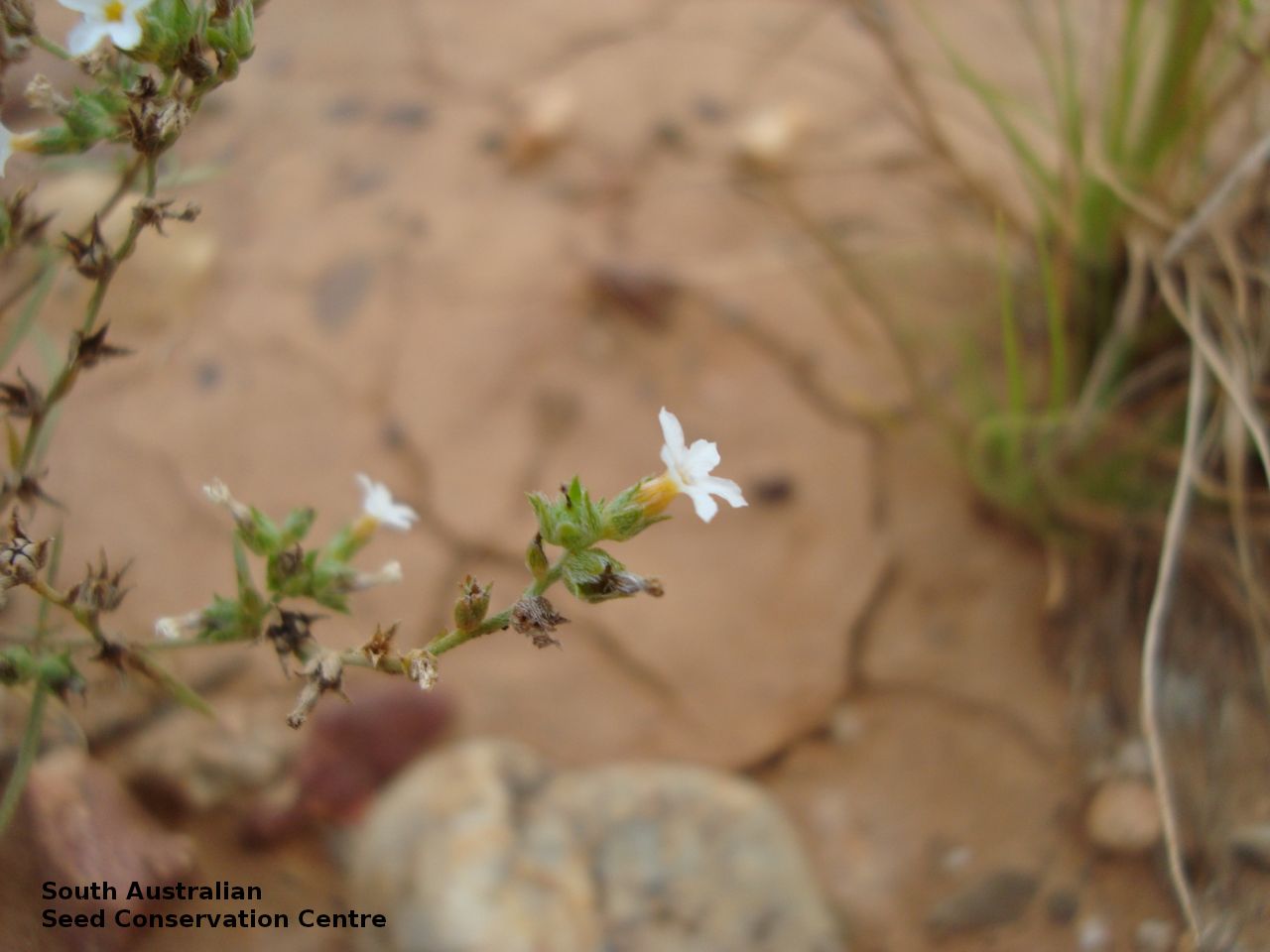
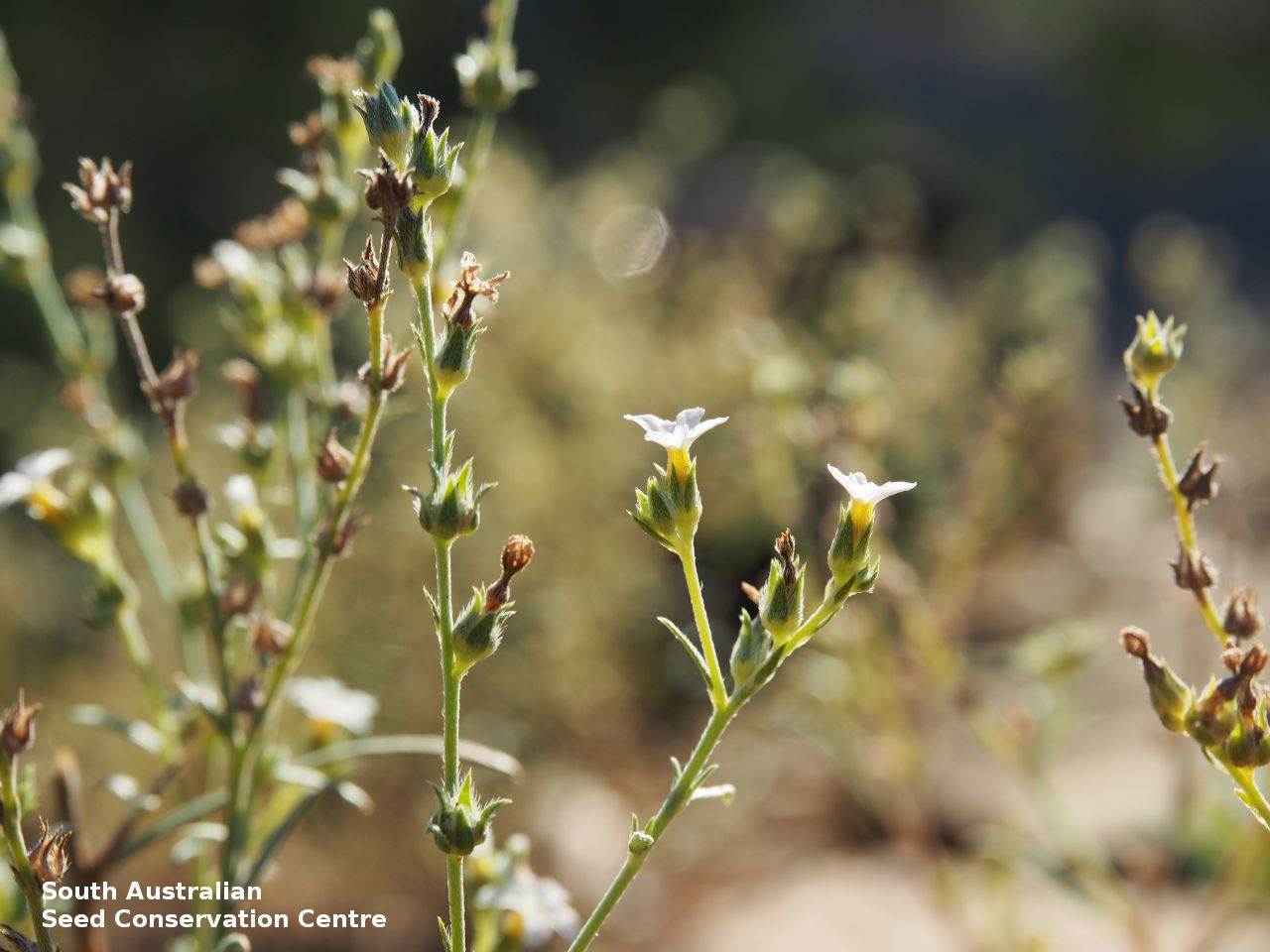
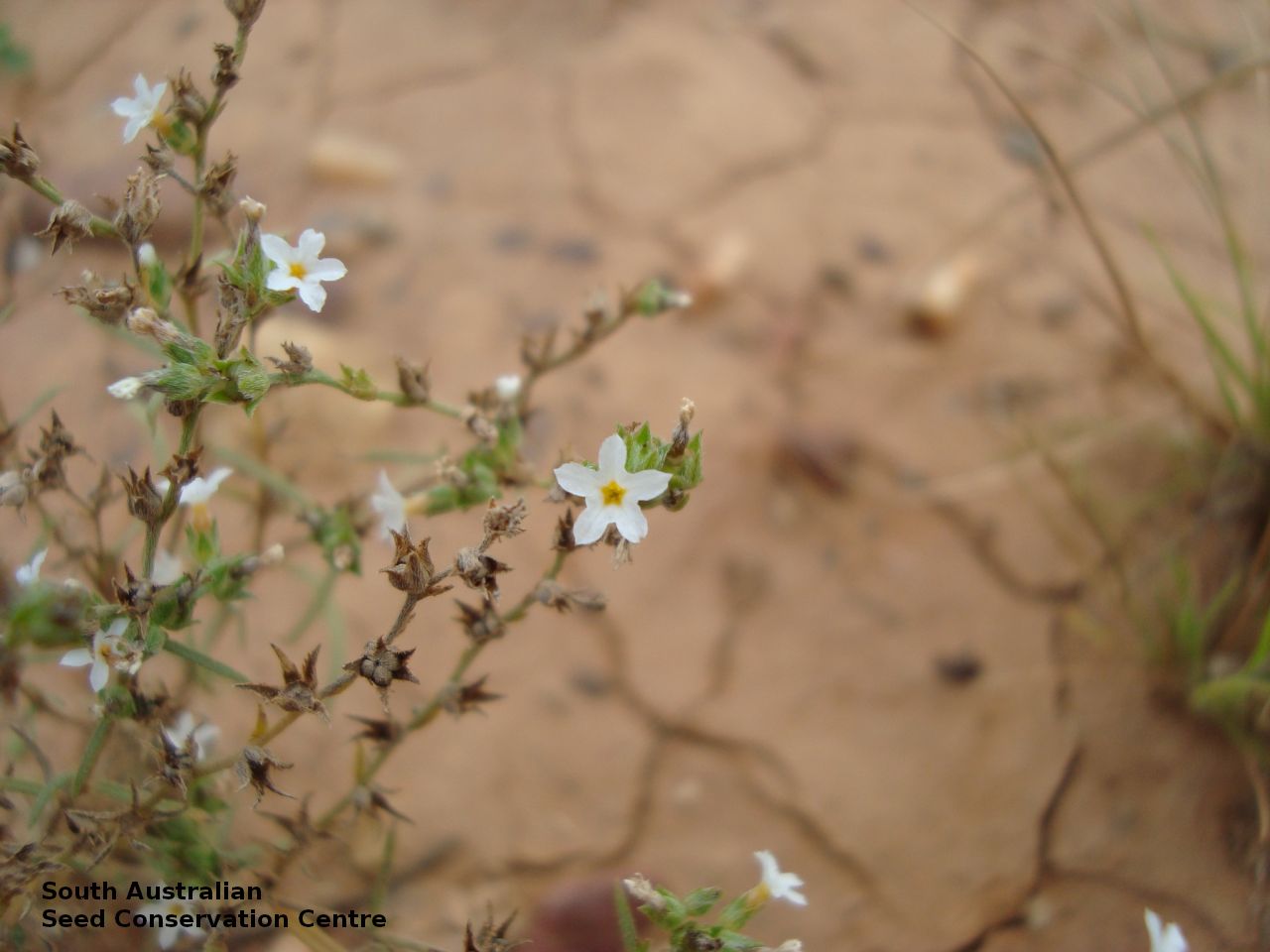
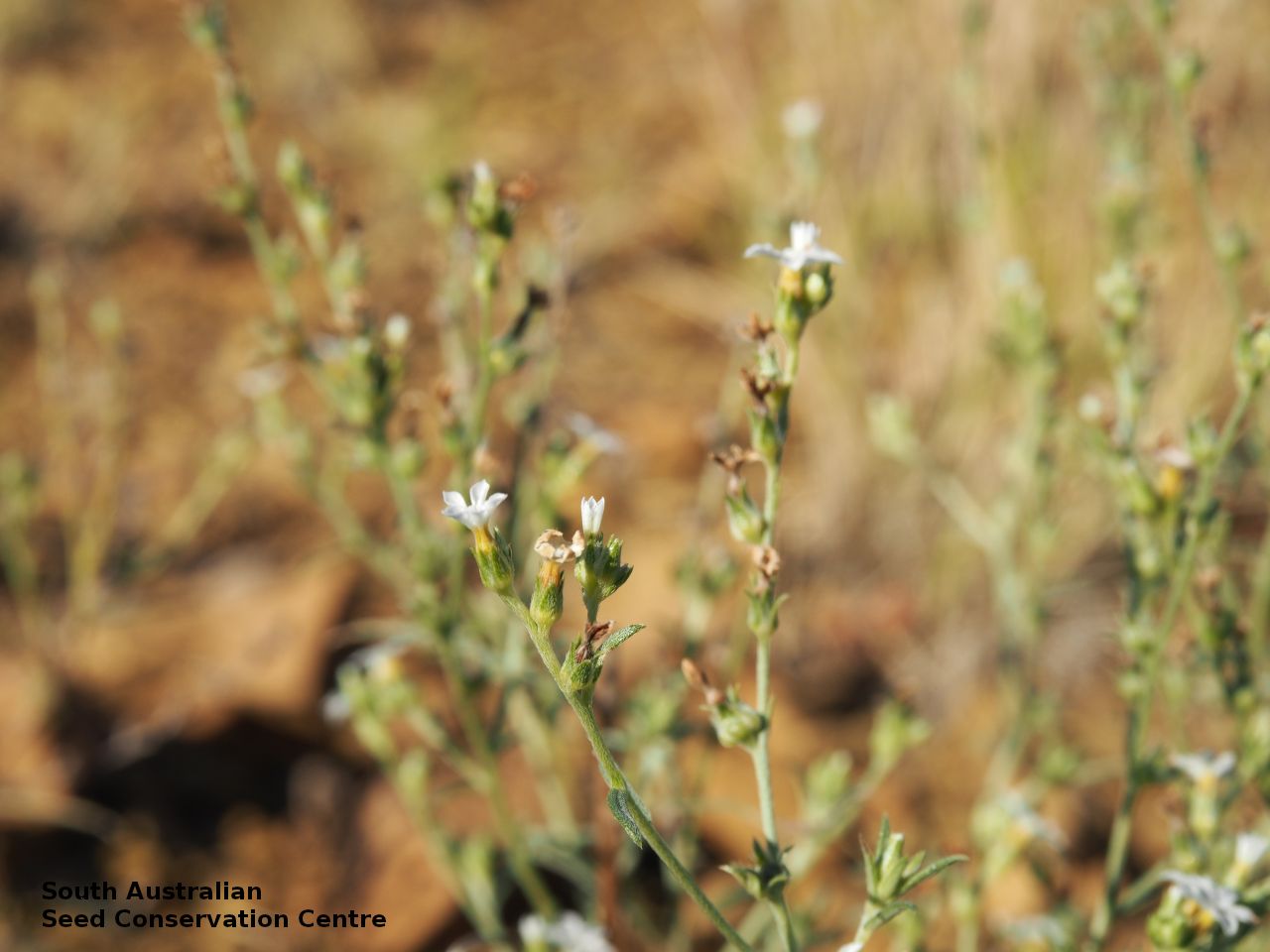
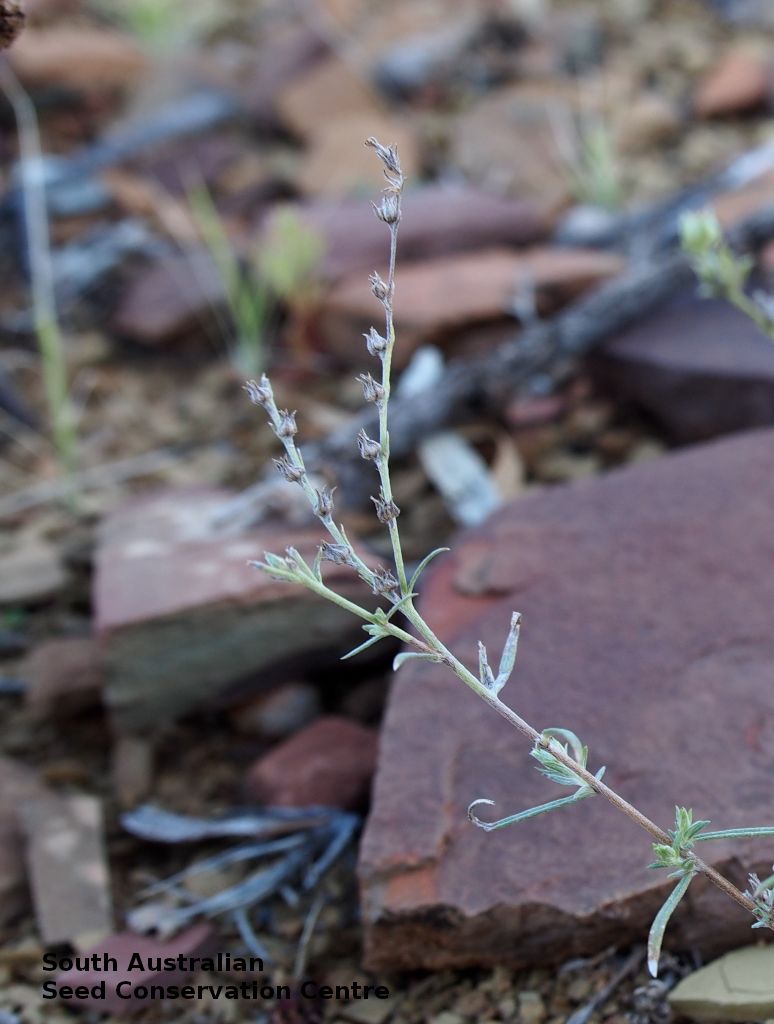
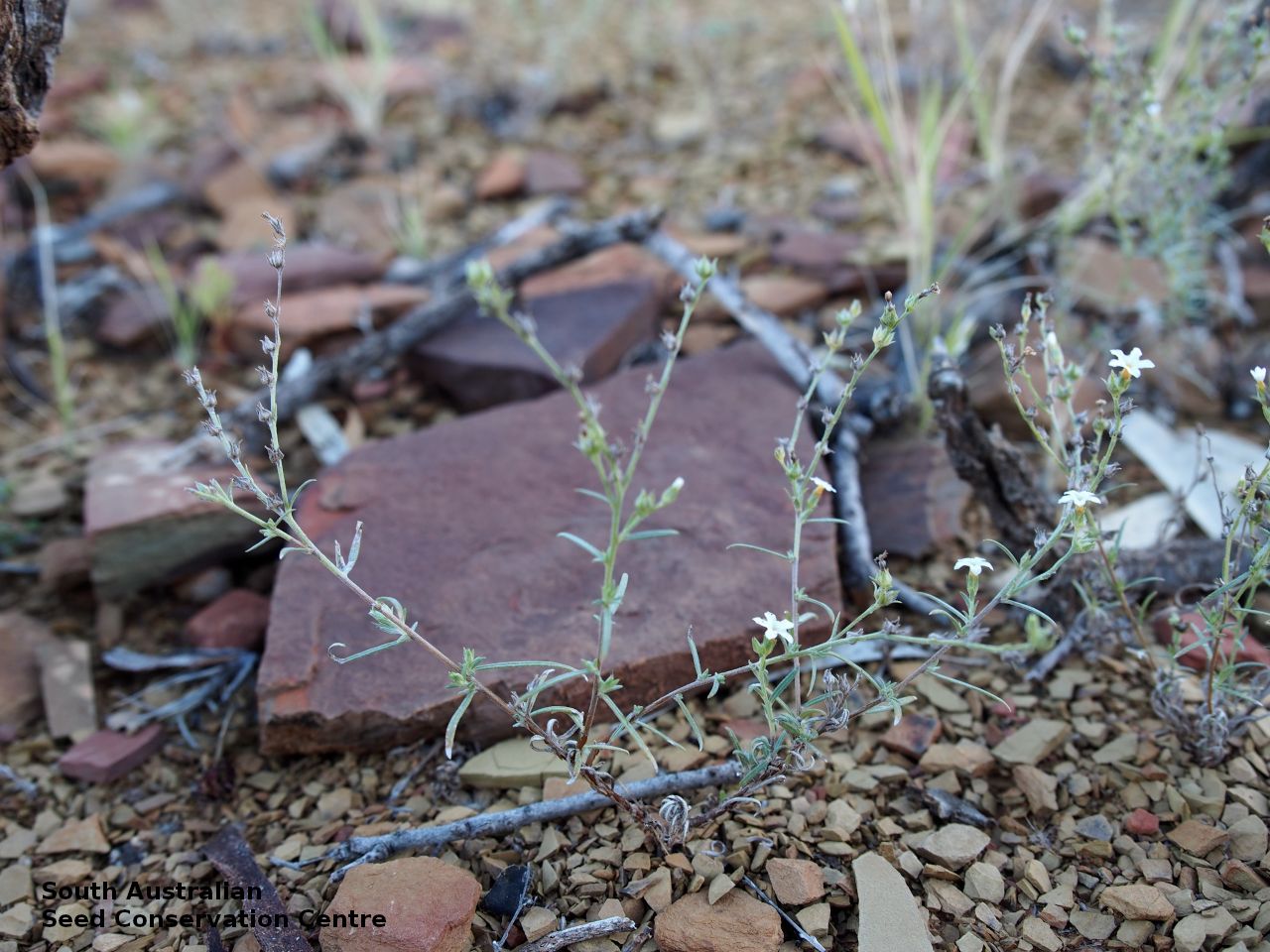
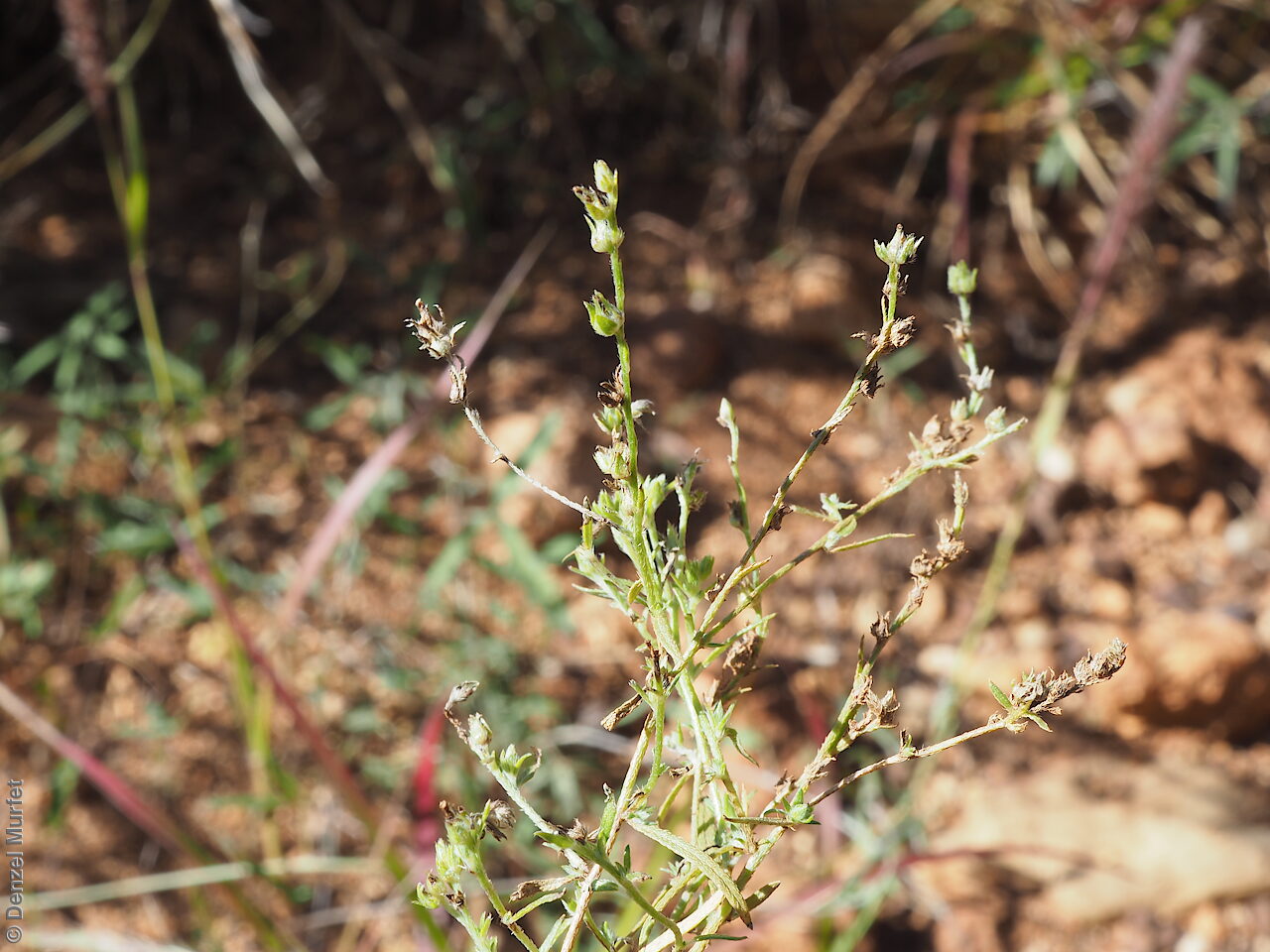
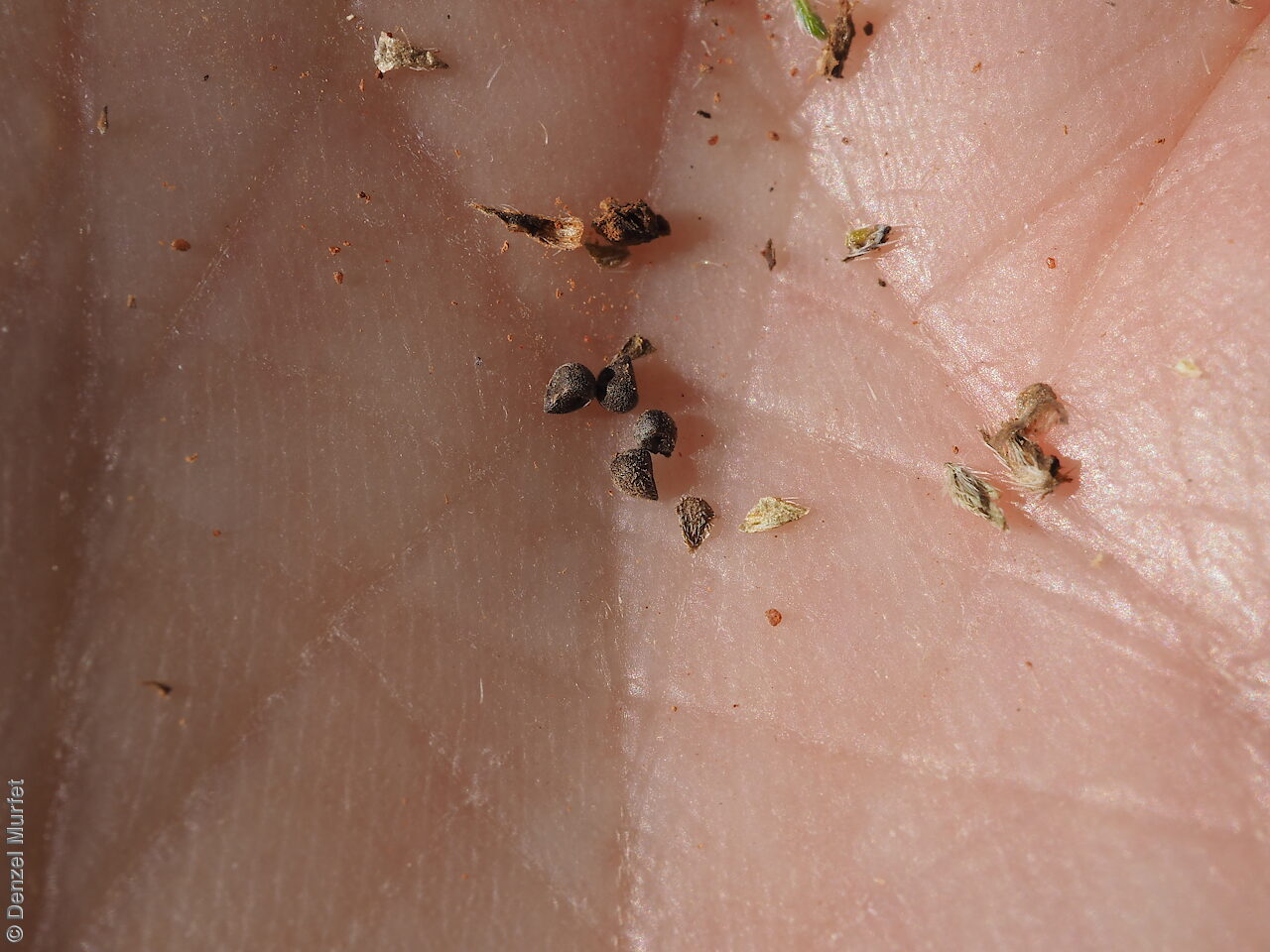
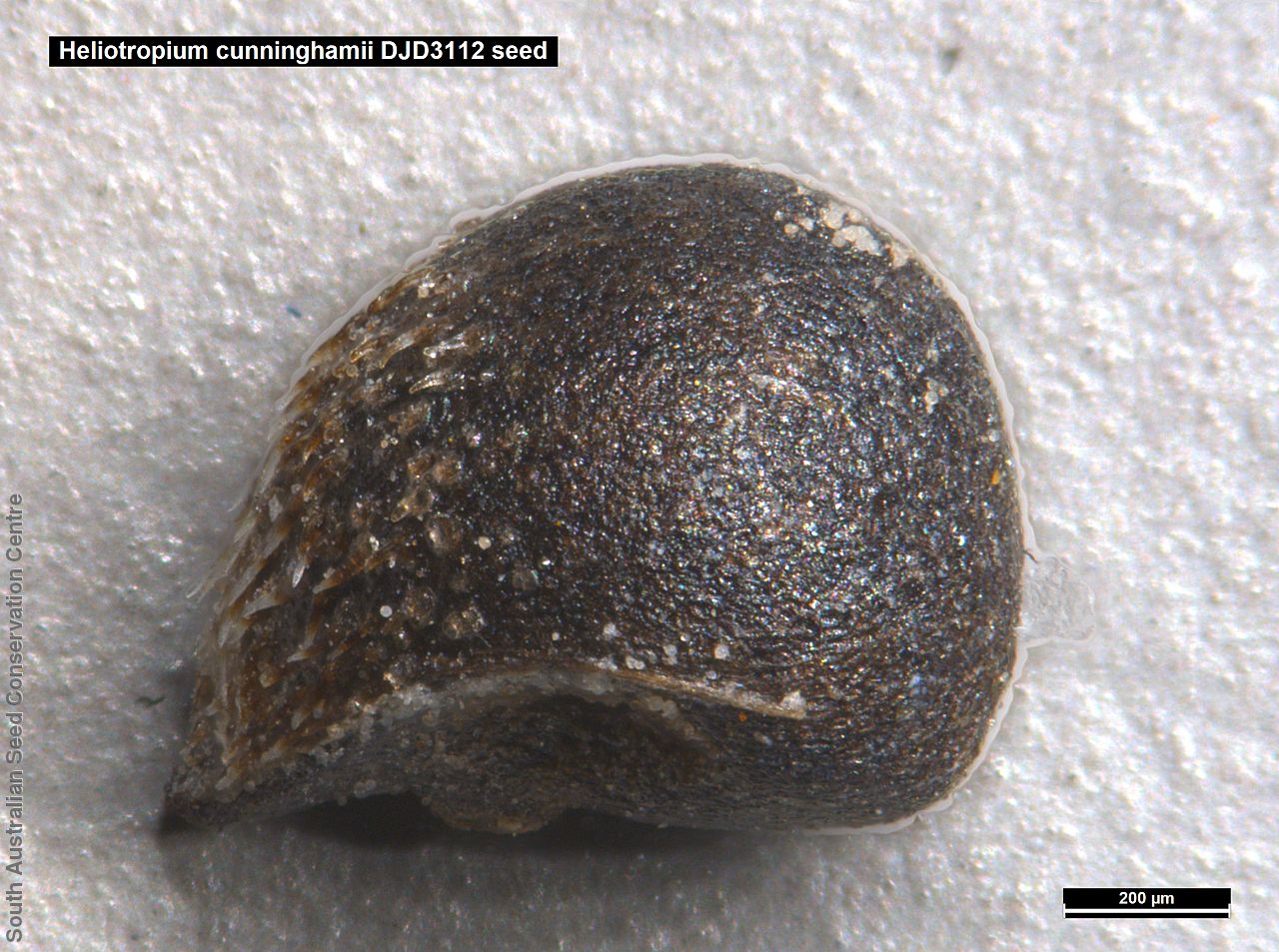
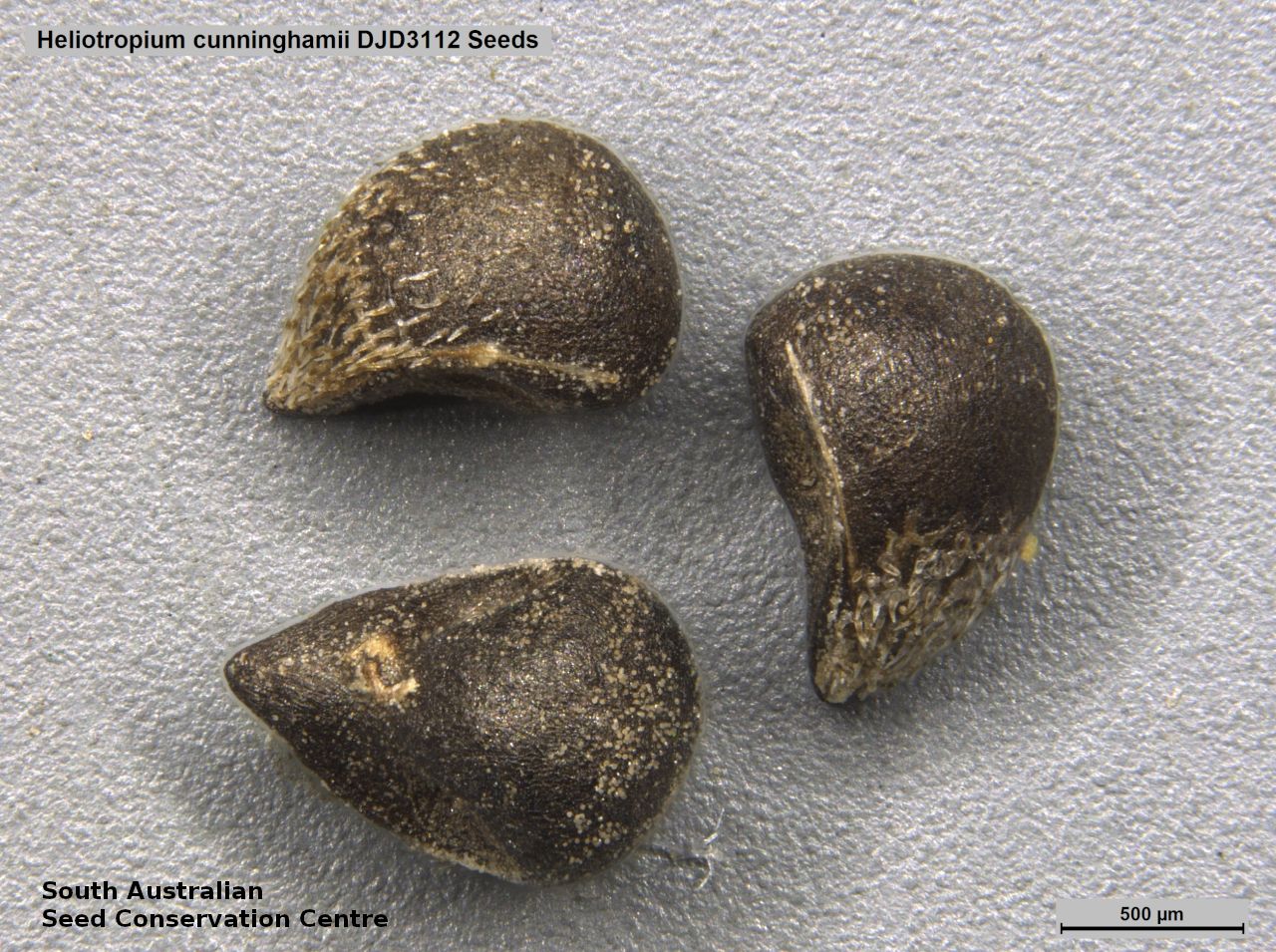
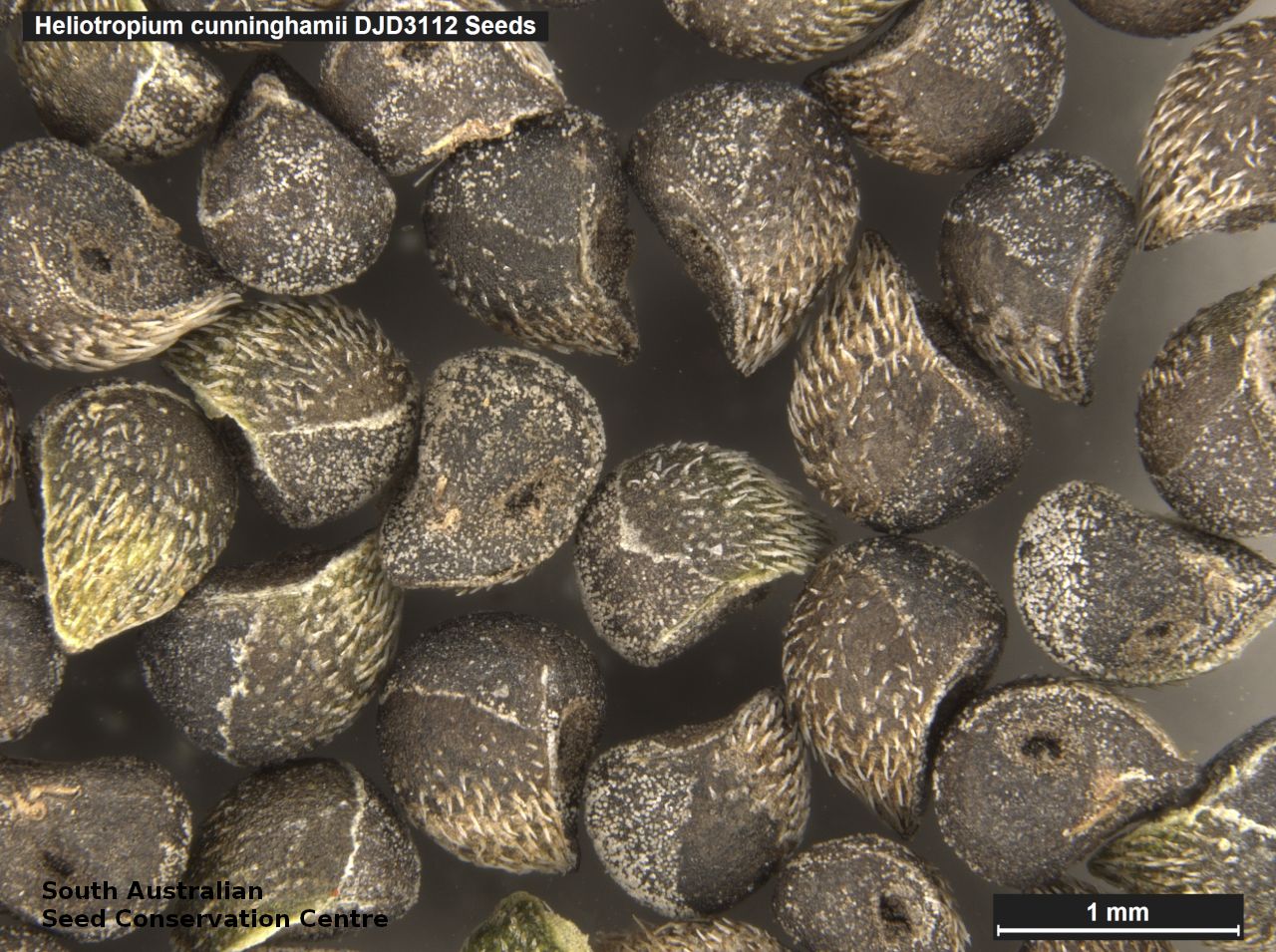


Prior names
Heliotropium tenuifolium var. parviflorum
Heliotropium tenuifolium, partly
Common names
Creeping Heliotrope
Bushy Heliotrope
Etymology
Heliotropium from the Greek 'helios' meaning sun and 'tropos' meaning turn; probably alluding to an early belief that the flowers turned to face the sun. Cunninghamii named after Allan Cunningham (1791-1839), an English botanist and explorer, primarily known for his travels in Australia to collect plants.
Distribution and status
Found in the north, north-west and north-eastern parts of South Australia growing in a wide range of habitats, including grassland, mulga, base of a sandstone ridge, scree slope of quartzite range, on red earth, limestone, gravelly and granitic sand soils. Also found in Western Australia, Northern Territory and Queensland. Native. Uncommon in South Australia. Common in the other States.
Herbarium regions: North Western, Lake Eyre, Flinders Ranges
NRM regions: Alinytjara Wilurara, South Australian Arid Lands
AVH map: SA distribution map (external link)
Plant description
Annual, ascending to spreading-ascending herb to 60 cm tall with hairs on the stems, leaves and calyx. Leaves linear to oblong, to 40 mm long and 1 mm wide on short-petiole; surface with wrinkles and appressed hairs; base narrowly cuneate to rounded, the apex acute to narrowly so. Inflorescence a spike at axils of leaves, with a number of white with yellow-centred, bell-shaped flowers. Flowering between January and December, often between March and June. Fruits are brown capsules along the spike, splitting open at maturity. Seeds are dark brown to black sectoroid seed to 1.5 mm long and 1 mm wide. Seed embryo type is spathulate fully developed.
Seed collection and propagation
Collect seeds between May and August. Collect mature capsules that are drying off, turning brown and contain dark, hard seeds. Can collect individual capsule or break off whole spike. Place the capsules in a tray and leave to dry for one to two weeks. Then rub the fruits gently by hand to dislodge the seeds. Use a sieve to separate the unwanted material. Store the seeds with a desiccant such as dried silica beads or dry rice, in an air tight container in a cool and dry place. From one collection, the seed viability was high, at 95%.
| Location | No. of seeds (weight grams) | Number of plants | Date collected | Collection number Collection location | Date stored | % Viability | Storage temperature |
|---|---|---|---|---|---|---|---|
| BGA MSB | 16,500 (6.8 g) 16,500 (6.8 g) | 50 | 17-May-2007 | RJB71821 North Western | 1-Aug-2007 | 95% | -18°C |
| BGA | 16,700 (6.36 g) | 100+ | 21-Apr-2015 | DJD3112 Flinders Ranges | 1-Jan-2016 | 95% | -18°C |
Number of plants: This is the number of plants from which the seeds were collected.
Collection location: The Herbarium of South Australia's region name.
% Viability: Percentage of filled healthy seeds determined by a cut test or x-ray.